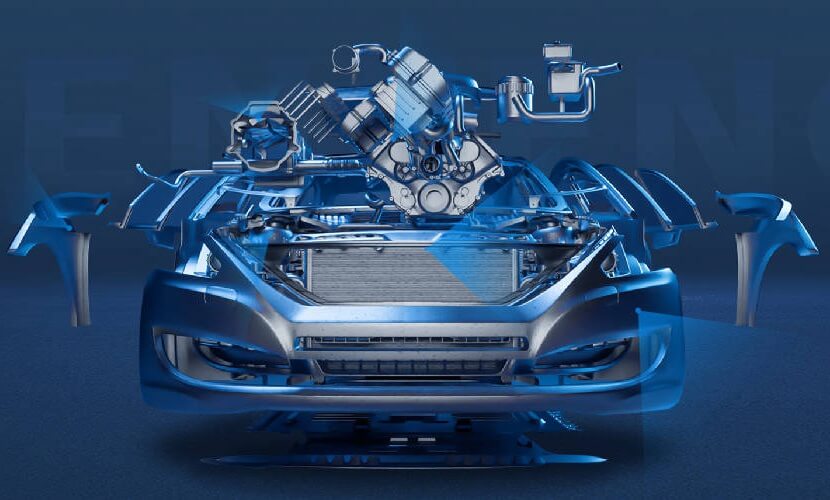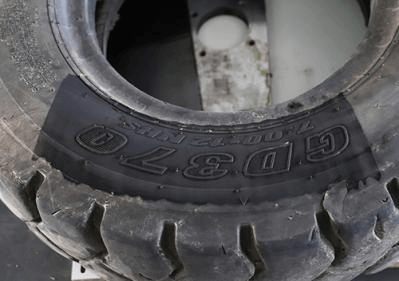Laser Knowledge
Fiber Laser Cleaning Machine in The Automotive Industry
In the auto industry, the old paint is removed from the surface of the car so that new paint can be applied before the body is overhauled. There are many traditional car body paint cleaning means, mainly mechanical and chemical means, these means have high cost, high energy consumption, easy pollution, easy to damage the surface of the substrate defects, has gradually failed to meet the high requirements for environmental protection of modern cleaning means.

Critical Automotive Applications

Pre-Welding Surface Preparation: Welding quality depends critically on surface cleanliness. Fiber laser cleaning removes oils, oxides, galvanizing, and mill scale from steel and aluminum components before welding. Clean surfaces ensure strong, consistent welds with minimal porosity and excellent penetration. This application alone justifies laser cleaning investment for many automotive manufacturers.
Body-in-white assembly, chassis fabrication, and structural component welding benefit enormously from laser pre-cleaning. The technology integrates seamlessly into automated production lines, cleaning surfaces immediately before welding without interrupting workflow.
Paint Preparation and Coating Removal: Automotive refinishing and remanufacturing require removing existing paint without damaging underlying metal. Fiber laser cleaning strips paint, primers, and coatings selectively, preparing surfaces perfectly for new finishes. Unlike chemical strippers that generate hazardous waste or abrasive methods that alter surface profiles, laser cleaning leaves ideal surface conditions for coating adhesion.
Collision repair centers and restoration shops especially value laser cleaning for selective paint removal, allowing technicians to strip damaged areas precisely while preserving surrounding finishes.
Rust and Corrosion Removal: Automotive components often develop surface rust during storage, shipping, or service life. Laser cleaning removes rust and oxidation completely, restoring bare metal without pitting or material loss. This capability is invaluable for component refurbishment, tooling maintenance, and preparing parts for assembly.

Classic car restoration professionals use laser cleaning to remove decades of corrosion from body panels, frames, and mechanical components while preserving original metal thickness and surface characteristics.
Mold and Tool Cleaning: Automotive manufacturing relies on injection molds, stamping dies, and forming tools that accumulate residues from lubricants, release agents, and material deposits. Traditional cleaning methods are time-consuming, require tool removal from production, and risk damage to precision surfaces.
Fiber laser cleaning removes deposits in-situ without disassembly, dramatically reducing downtime. Tool life extends as laser cleaning eliminates the surface wear caused by abrasive methods. Many manufacturers report 50-70% reduction in tool cleaning time after implementing laser technology.

Tire Mold Cleaning: Rubber tire molds accumulate vulcanized rubber residue that conventional cleaning struggles to remove completely. Laser cleaning eliminates buildup thoroughly without damaging intricate mold patterns or temperature-sensitive surfaces. Tire manufacturers report improved product quality and extended mold life with laser cleaning.
Understanding Fiber Laser Cleaning Technology
Fiber laser cleaning uses high-intensity pulsed laser beams to remove contaminants, coatings, rust, and oxides from metal surfaces through ablation. The laser energy vaporizes unwanted materials in microseconds while leaving the base substrate undamaged. Unlike conventional methods requiring chemicals, media, or consumables, laser cleaning operates with just electricity and compressed air, making it environmentally friendly and cost-effective.
The process is selective—properly calibrated lasers remove only target materials without affecting the underlying metal. This precision is impossible with sandblasting, chemical stripping, or grinding methods that inevitably damage base materials.
Advantages of fiber laser cleaning machine :
1.Automatic assembly line: laser cleaning machine can be integrated with CNC machine tools or robots to implement remote control cleaning, can realize the automation of equipment, the formation of product assembly line operation, intelligent operation.
2.Accurate positioning: non-contact laser cleaning is performed on parts that are difficult to reach by traditional cleaning methods such as special-shaped parts, holes, grooves, etc.
3.No damage: Short-term impact will not heat the metal surface, and no damage to the substrate.
4.Good stability: the pulse laser used by the laser cleaning machine has a long service life, usually up to 100000 hours of service life, stable quality and good reliability.
5.No environmental pollution:Do not need to use any chemical agents and cleaning fluid, cleaning down the waste is basically solid powder, small volume, easy to store, can be recycled, non-light chemical reaction, no pollution.
6.Low maintenance cost: There is no consumption of consumables during the use of the laser cleaning machine, and the operating cost is low. Only the lenses need to be cleaned or replaced regularly in the later period. The maintenance cost is low and close to maintenance-free.
Advantages Over Traditional Methods
Environmental Compliance: Chemical cleaning generates hazardous waste requiring expensive disposal and creates worker exposure risks. Abrasive blasting produces dust and requires media disposal. Laser cleaning generates no hazardous waste—only small amounts of vaporized material that standard filtration systems capture easily. This dramatically simplifies environmental compliance and reduces operational costs.
Worker Safety: Eliminating chemical exposure, silica dust, and physical abrasives creates safer workplaces. Operators work behind protective barriers or wear simple safety glasses rather than full respirators and protective suits. Reduced worker compensation claims and improved recruitment follow naturally.
Precision and Selectivity: Laser parameters adjust precisely to remove specific materials while preserving substrates. Clean defined areas without affecting adjacent surfaces—impossible with chemical baths or blasting. This selectivity enables applications previously impractical with conventional methods.
Speed and Efficiency: Laser cleaning operates at speeds matching or exceeding traditional methods while eliminating setup, consumable handling, and post-cleaning waste management. Automated systems clean components without human intervention, integrating seamlessly into production lines.
No Consumables: After initial equipment investment, operational costs include only electricity and minimal maintenance. No chemicals to purchase, store, or dispose of. No abrasive media requiring constant replenishment. This dramatically reduces long-term operating expenses.
Surface Quality: Laser cleaning produces superior surface profiles optimized for subsequent processes. Welding, coating, and bonding all benefit from the consistent, contaminate-free surfaces laser cleaning provides.
Technical Specifications for Automotive Applications
Laser Power Range: Automotive applications typically use 100W to 1000W fiber lasers. Higher powers enable faster cleaning and handle heavier contamination, while lower powers suit delicate applications. Many manufacturers start with 200-500W systems offering excellent versatility.
Pulse Duration and Frequency: Nanosecond pulse lasers provide optimal cleaning efficiency for most automotive materials. Adjustable pulse frequencies allow customization for different contaminants and substrates.
Handheld vs. Automated Systems: Handheld laser cleaning guns offer flexibility for irregular parts, repair applications, and low-volume operations. Automated robotic systems integrate into production lines for high-volume consistent cleaning of standard components.
Safety Systems: Professional laser cleaning equipment includes comprehensive safety features—interlock systems, protective enclosures, emission monitoring, and operator protection ensuring safe operation in industrial environments.
The iGoldenLaser Automotive Advantage
Our fiber laser cleaning solutions are specifically configured for automotive industry demands. We provide application testing, process parameter development, operator training, and ongoing technical support ensuring your laser cleaning implementation succeeds immediately and continues delivering value throughout the equipment lifecycle.
Our automotive industry experience means we understand your specific challenges and provide practical solutions rather than generic equipment.

IGOLDEN BLOG
Thank you for visiting the iGOLDENCNC website. iGOLDENCNC is the professional supplier of CNC machinery application solution, within the business of producing and selling CNC machinery and accessories.